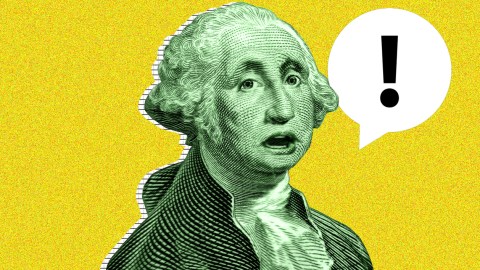What is the average tax refund?

Now that you’ve filed your taxes, you can sit back and wait for the refund to come your way. Will you get it? There is a very good chance that you will as almost eight out of 10 people received a tax refund in 2017. The average size of the refund? $2,895, according to the IRS.
How much tax do Americans pay—and get back?
Altogether, the refunds totaled $324 billion. Out of that, people in Texas got the highest average return of $3,133, while the northern states that border Canada had the smallest refunds. The lowest overall amount of returned money was in Maine, averaging $2,302.
Which state got the most refunds? The state with the most people: California, which also had the largest total amount of money refunded. All this is about to change, however, due to President’s Trump new tax-cut plan, which has one million Californians owing a collective $12 billion, reports the Sacramento Bee. The cause of this is the newly installed cap on a deduction from local and state taxes that these Californians were previously able to take. While the lion’s share of this money will be paid by the wealthiest group, 751,000 households who earn under $250,000 will likely owe more tax as well.
If you want to know how much an average American pays in taxes, that number is $10,489. That’s how much we pay every year on average in federal, state and local taxes, says the Bureau of Labor Statistics. In some more interesting numbers, the group that pays the most taxes is in the 45-54 range, paying about $16,339 in taxes every year. The group paying the least? You might think it’s the youngest members of the workforce, but interestingly people under 25 paid more ($11,508) than people between 25 and 34 who paid only $7,608 on average.
What if everyone paid a flat tax?
The variation in the tax brackets and the varying earning ability at different points in life is what’s responsible for the range of numbers above. But what if everyone paid the same percentage in taxes? If a so-called flat tax was implemented, it would perhaps feel fairer as everyone would pay the same share of their income. It would be much simpler to file such taxes.
On the other hand, a flat tax doesn’t affect taxpayers proportionally, even if the tax itself is equal, says Forbes. People earning less are much more affected by paying, let’s say, 15% of their income to the government than those pulling in millions since the baseline cost of living remains the same. A gallon of gas costs the same for the rich as it does for the financially insecure. Paying 15% tax on a $50,000 a year salary is $7,500, leaving just $42,500 to live on annually. Paying 15% tax on a million is $150,000; you’ll still have $850,000 to tide you over.






